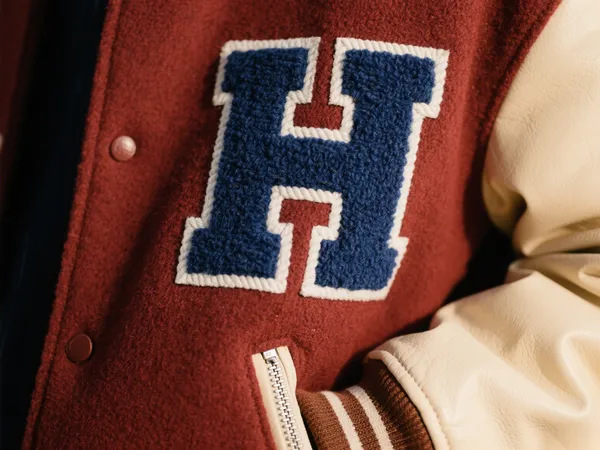In the custom manufacturing industry, it’s common to face challenges when clients don’t provide clear designs or specifications. Instead, they might only share a blurry reference image or a vague idea, hoping that the manufacturer can bring their vision to life. Today, I want to share a real case study that illustrates how, even with limited information, we did our best to help a client create a custom TPU patch—despite the challenges.
The Challenge: Turning a Blurry Image into a TPU Patch
One of our clients, Duane, came to us through Alibaba with a rather unclear request. He didn’t have any design files or detailed parameters; instead, he sent us a screenshot of a product he liked, which featured a design for a TPU patch intended for children’s clothing. The image was blurry, and it was nearly impossible to discern any of the fine details or material compositions. However, as a professional custom TPU patch provider, we were ready to take on the challenge.

The Initial Request
Here’s the blurry reference image Duane sent us (Image 1):
As you can see, the image provides no clarity on the finer details of the design. It was difficult to determine the exact composition of the patch or what the pattern consisted of. Our first step was to contact the design team and see if they could try to make sense of the image.
However, as expected, the design team quickly pointed out that working with such a vague image would make it almost impossible to create an accurate design. They advised that it would be better to get a clearer image or a physical sample from Duane.
Gathering More Information: Getting Closer to the Design
After more detailed communication with Duane, we discovered that he wanted a silver TPU duck design with a “river” in the center of the image. However, Duane didn’t have any clearer images or physical samples to share. Despite this, he was still hopeful that we could work with the existing reference image and make the design come to life.
With this information in hand, we passed the details along to the design team. They analyzed the image and tried to extract key elements from the blurry reference. By combining what we knew about Duane’s needs and the intended use for the patch, our designers put together an initial concept for the custom TPU patch (Image 2):

Initial Design and Sample Production
Duane received the preliminary design and confirmed that it was still not quite what he had in mind, but he wanted us to proceed with creating a sample to evaluate the effect. We followed the design as closely as possible and produced the TPU patch sample (Image 3):

After receiving the sample, Duane appreciated the quality and craftsmanship but mentioned that the patch still didn’t quite match the “feel” he had in his mind. Unfortunately, because Duane couldn’t provide clearer images or a physical reference, we were unable to make further refinements. As a result, the project was put on hold.
Lessons Learned: The Importance of Clear Design Information
While this case did not result in an order, it highlights an important challenge in the custom manufacturing world—without clear information, even the most professional efforts can fall short. No matter how skilled a design team is, turning a vague image or a conceptual idea into a finished product requires clear, accurate input. Design isn’t something that can be guessed; it’s the result of information, communication, and collaboration.
In this instance, we did everything we could to interpret the blurred reference image and deliver a custom TPU patch that met Duane’s expectations. However, due to the lack of precise information, we couldn’t get the final product right.
For anyone looking to start a カスタムパッチ project, I encourage you to prepare as much detailed information as possible before you begin. A clear design, high-quality images, or even physical samples can make all the difference in ensuring a smooth production process and minimizing the need for multiple revisions.
Why Clear Designs Matter for Custom TPU Patches
When creating TPUパッチ or any type of custom product, the more details you provide, the better the outcome. The design process is a collaborative one, and clear communication helps avoid delays, misunderstandings, and unnecessary costs. Whether you’re looking to create custom TPU patches for clothing or other applications, always aim to provide the most accurate information possible. This will save both time and resources and ensure that the final product is as close to your vision as possible.
Conclusion: How to Avoid Pitfalls in Custom Patch Design
Creating custom products, such as TPUパッチ, can be challenging, especially when the design process starts with vague or unclear input. However, as this case demonstrates, professional designers can still deliver great results, even with limited resources. The key takeaway is this: the more information you provide upfront, the better the final product will be.
Have you ever encountered a situation where you only had a blurry image to work from? How did you handle it? Share your experiences and insights in the comments below. If you liked this real-life case study, feel free to like, share, or comment to help others learn from our experience. Stay tuned for more stories and tips from the custom manufacturing world!



